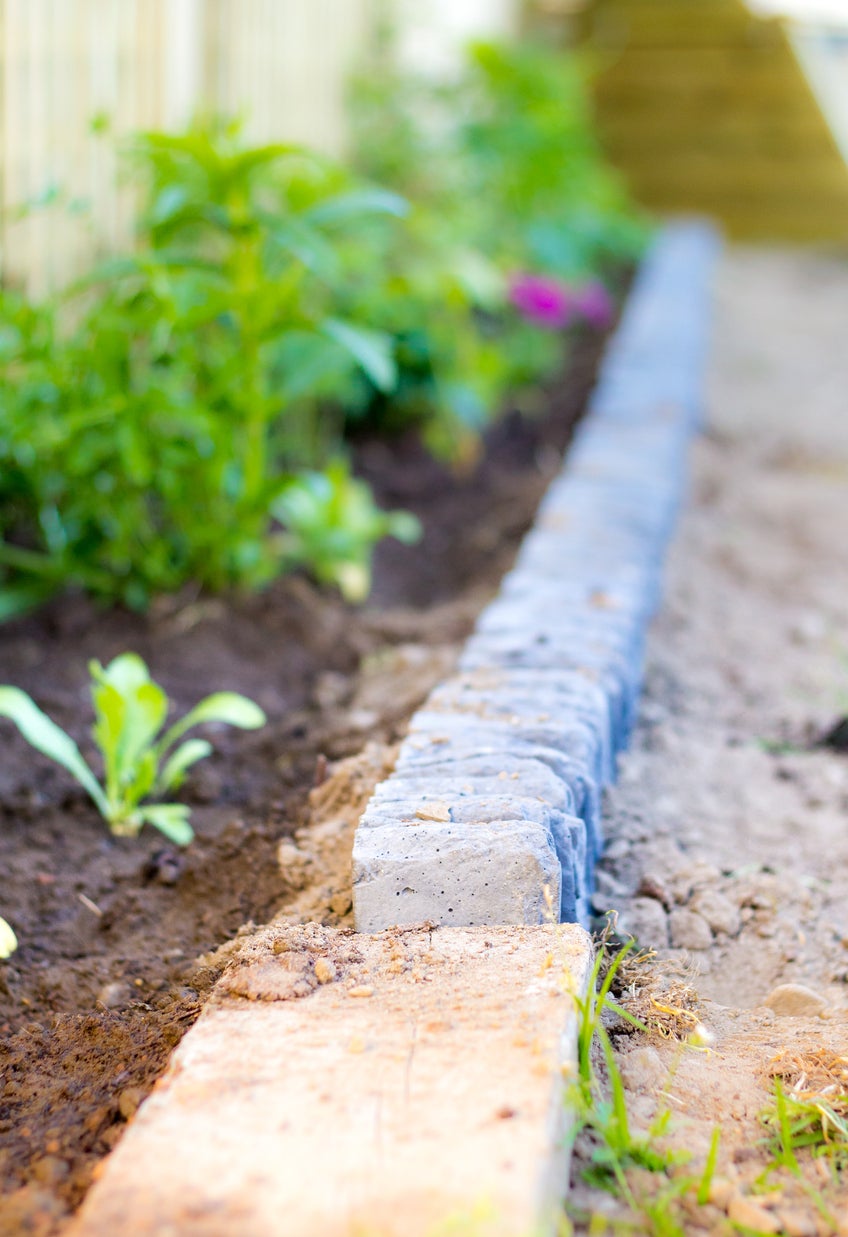Garden Border Made Of Rocks – Ideas For Stone Garden Edging


Edging creates a physical and visual barrier that separates flower beds from the lawn. When it comes to edging choices, gardeners have an array of man-made products and natural resources from which to choose. Each type lends a different ambiance to the property's curb appeal. When creating a natural look, nothing beats rock garden edging.
How to Use Rocks as Garden Border
As a natural material, rocks come in a variety of colors, shapes, and sizes. This range lends itself well for gardeners wishing to create a unique stone garden-edging design. How you line your garden with stones will depend upon which type of stones are readily available. Here are some ideas for designing a border made of rocks:
Large flat stones can be layered to create a stacked stone edging. The weight of the stones will keep it in place, so mortar is not necessary. The best rocks for stacked edging include limestone, sandstone, granite, or shale.
Small boulders, about the size of a basketball, can be set side by side to create a natural-looking border made of rocks. These rocks carry sufficient weight not to be easily dislodged.
Mid- to large-sized stones (the size of a large potato or bigger) placed close together around the perimeter of the flower bed will help retain mulch and prevent grass from creeping through the rock garden edging. Soaking the ground and pushing the stones into the soft soil will prevent them from being dislodged.
Small stones or gravel, placed in a 4-inch (10 cm.) wide trench lined with black plastic or landscape fabric gives a nice, clean edge when using rocks as a garden border. This type of rock garden edging can eliminate hand trimming around flower beds.
Where to Find Rocks for Stone Garden Edging
If the rock garden edging is a DIY project, the stone acquisition will be up to you. Your local nursery, landscaping retail outlet, or big box home improvement store is one resource for edging stones. But if the idea of spending money on something nature created feels a bit unnatural, there are plenty of places to acquire the rocks you'll need:
Sign up for the Gardening Know How newsletter today and receive a free copy of our e-book "How to Grow Delicious Tomatoes".
- Construction sites – Is your neighbor or family member building an addition or are bulldozers grading that commercial property down the street? Ask for permission first – there may be liability issues.
- Farms – Do you have a friend or coworker who farms? Rocks can damage plow and disk blades, so most farmers are glad to be rid of them. They may even have a pile sitting next to their fields.
- Local parks and national forests – Some public lands allow rockhounding (the hobby of searching for and collecting rocks). Ask about daily and yearly limitations.
- Craigslist, Freecycle, and Facebook – Websites and social media are great places for people to get rid of things they no longer want or need. You'll have to move quickly as some items go fast.

Laura Miller has been gardening all her life. Holding a degree in Biology, Nutrition, and Agriculture, Laura's area of expertise is vegetables, herbs, and all things edible. She lives in Ohio.